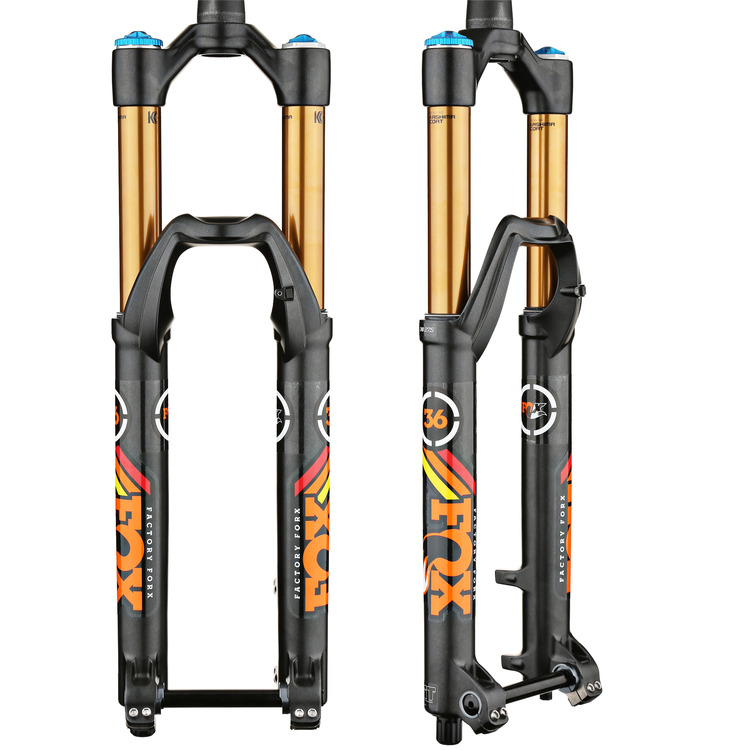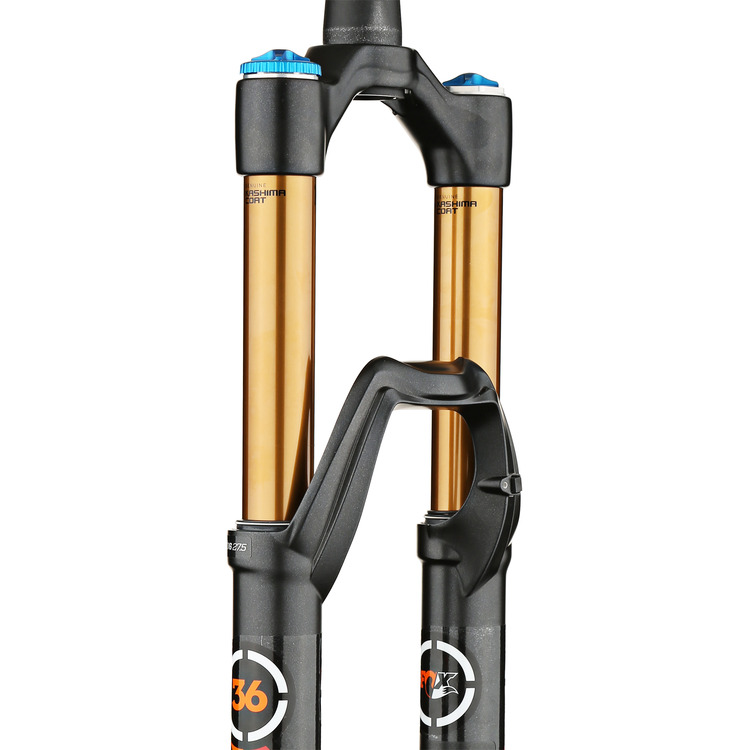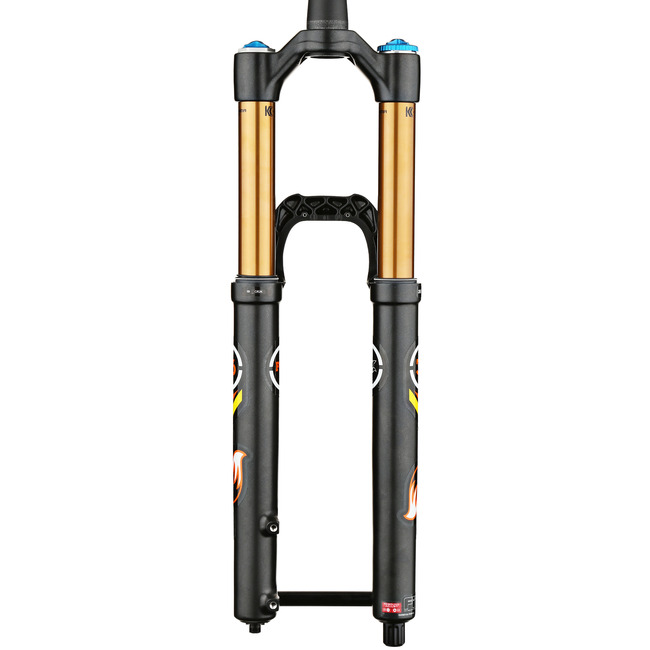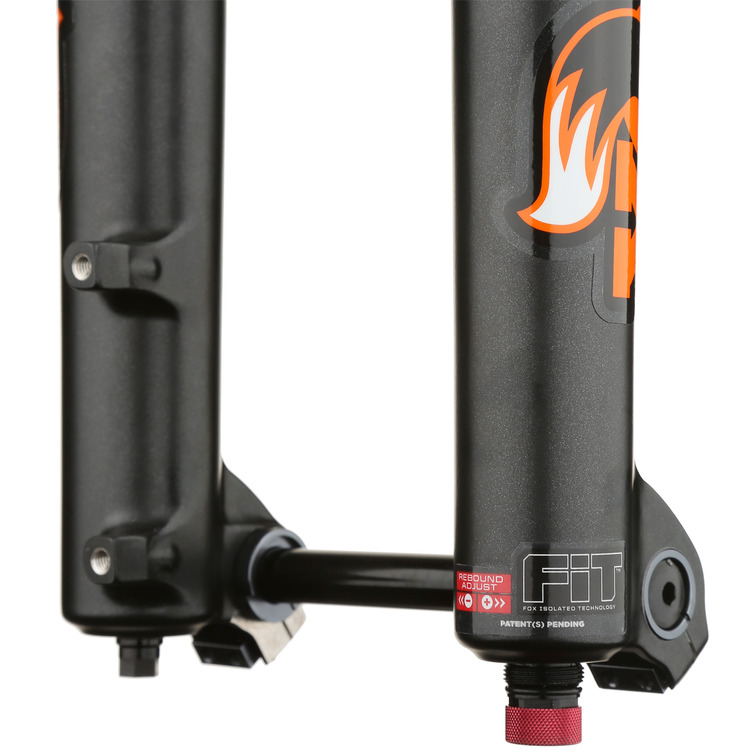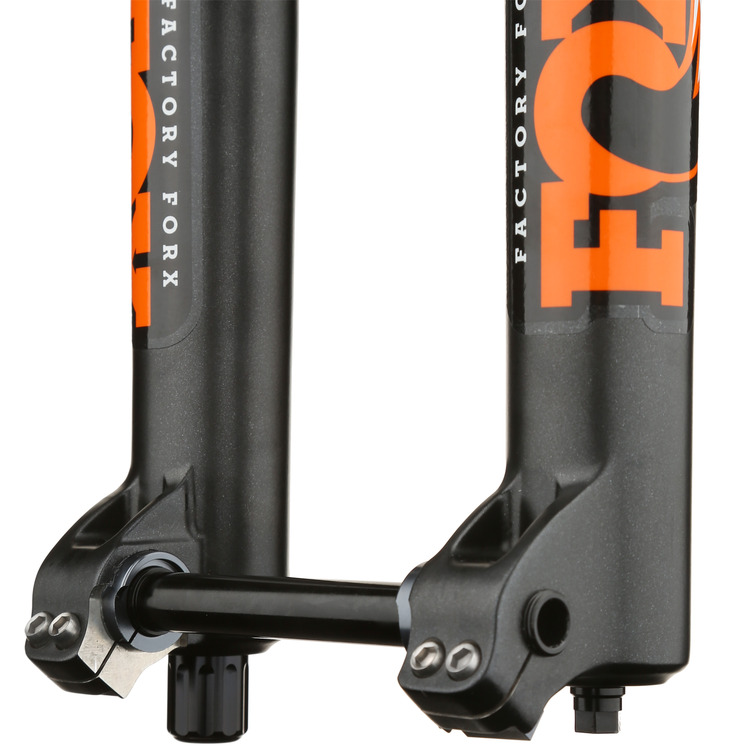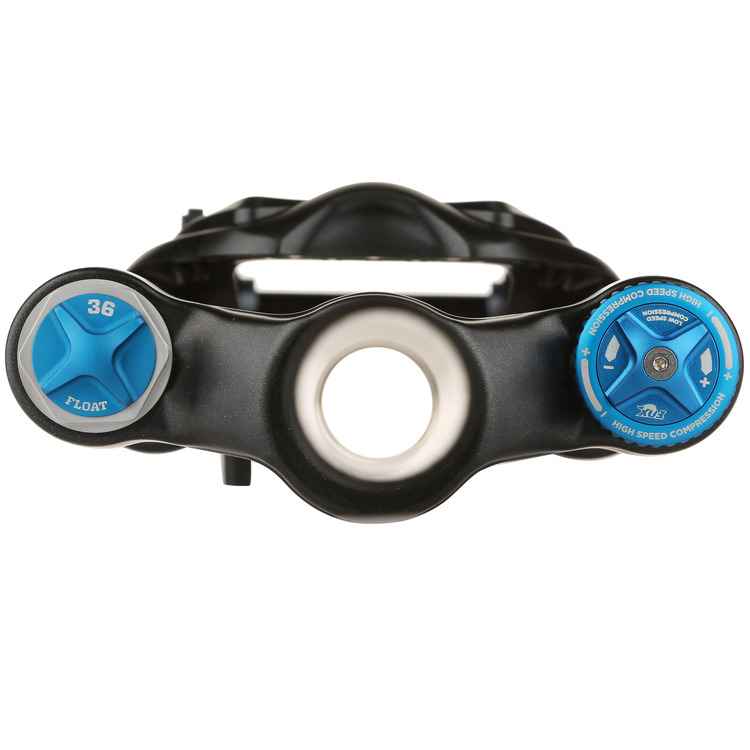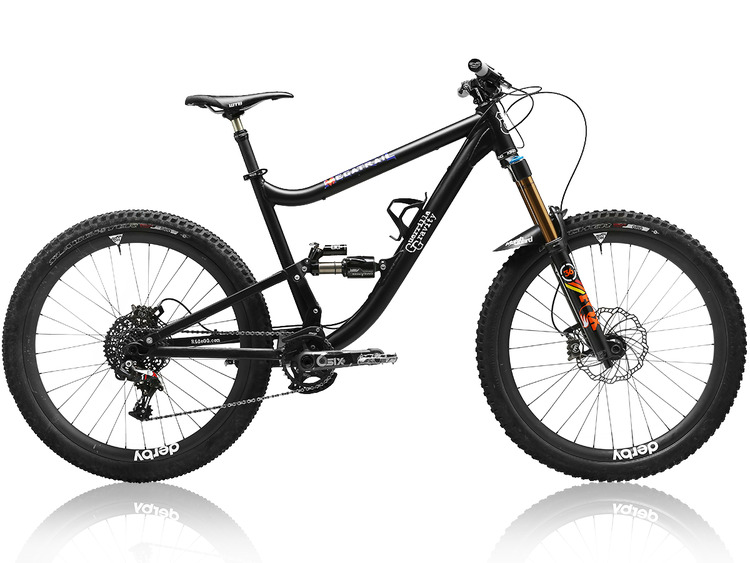2015 Fox 36 Talas Fork Review
 Thursday, April 16, 2015 at 7:40PM
Thursday, April 16, 2015 at 7:40PM  Permalink
Permalink Fox has been in the mountain bike suspension game for almost 15 years now. Their first fork was a longer travel AM variety it came out with 32mm legs and in doing so gave a glimpse of the future. Eventually Fox came out with the 36 and this fork helped to launch the single crown Freeride movement. Its 36mm fork legs where much larger than the common 32mm of the time. This allowed for a fork with better tracking and the ability to increase travel without bringing flex into the picture. From there they went into the Downhill market with the introduction of the 40. This fork was a breakthrough for larger riders out there. Their use of 40mm fork legs added a stiffness to their fork that no other brand could match at that weight.
Eventually trail and AM forks gravitated towards Air springs to help with weight, adjustment and progession. Fox has used a number of different damper units over the years. The 2015 Fox 36 Talas features the Fit RC2 unit. Fox had some catching up to do with RockShox and manitou on the damper side of things. Many XC oriented riders thought the new Pike was the Holy Grail. Guess none of them had ever felt the suppelness of a Dorado or older generation 888 fork. Guess they think the parking lot stiction test is how you rate a forks performance. Once stuff starts moving faster and the bumps start hitting harder what really matter is action and the dampers ability to maintain control. Not to mention the forks abilty to to track over rough terrain and steer where it is pointed.
"Fox had some very stiff competition recently in the suspension world (no pun intended). Not happy to concede its well-earned market share, the company has completely revamped its heavy-duty 36mm-stanchion lineup for 2015, and the 2015 FOX 36 TALAS 27.5 160 RC2 FIT Fork is a great example of its efforts.
The 36's chassis was the first area of scrutiny. The crown has been redesigned to be both lighter and lower, resulting in a shorter axle-to-crown measurements across the board, so that installing the fork means minimal — if any — alteration of the bike's front-end geometry, unlike when installing some other forks, including FOX's previous 36 series. The fork's lowers have been re-engineered to be lighter and stiffer, as well, resulting a chassis with greater rigidity, but weight figures that are very close to that of its smaller 34 series of forks. A newly formulated, higher-viscosity proprietary fork oil is now used, too.
Both the adjustable TALAS and the non-adjustable FLOAT air spring systems have also been revised. A reduced number of seals means that both operate more smoothly, but that's not all. TALAS springs have been retuned to ramp-up more toward full compression, making them more stable under big hits and extreme terrain, and thus friendly to more aggressive riders. The FLOAT forks now include volume-reducing spacers so that riders can fine-tune the system's ramp-up rate. The letters FIT designate that the fork is equipped with FOX Isolated Technology damper, which means that the fork's damper sits in an air-tight bladder, as opposed to a more common open bath system, which means that the damper resists debris contamination and thus remains smoother and more consistent between maintenance intervals.
TALAS, of course, is an acronym that denotes FOX's Travel Adjustable Linear Air Spring system, which means the fork's travel is adjustable per riding conditions. In the case of the 160mm fork you see here, travel can be reduced down to 120mm, lowering the front end of the bike to make for quicker handling and a more forward-leaning riding position, which helps enormously on the climbs or when you need to sprint. Finally, if you're wondering, the RC2 designation in the fork's title stands for Rebound and the two different Compression settings (high-speed and low-speed) you can adjust to dial the fork to your tastes.
The 2015 FOX 26 TALAS 27.5 160 RC2 FIT Fork is for use with 27.5-inch wheels only, comes only in the color Black, and has a 1.125-1.5-inch tapered steerer tube. The new front axle system is convertible between both 15mm and 20mm thru-axles with included parts."
- Travel: 120 - 160 mm
- Stanchion Material: Kashima-coated aluminum
- Lower Material: Magnesium
- Wheel Size: 27.5 in
- Steer Tube Diameter: 1.125 - 1.5 in
- Stanchion Diameter: 36 mm
- Spring Type: Air
- Damper: FIT
- Adjustability: TALAS 2-position travel adjust
- Axle: 15 mm, 20 mm
- Brake Compatibility: Post Mount
- Recommended Use: Trail, All-Mountain, Freeride
- Manufacturer Warranty: 1 year
- Actual Weight: Black, 1.5T/20mm: 2,210g
Another major improvement they went after was a reduction in friction and to improve the RC2 damper tunes. The FIT RC2 damper is what Fox is using to fight back agains the other two major suspension players. They are at a disadvantage as far as stiction goes just by using larger diameter legs. Going with the RC2 and altering their seal configuration allowed Fox to at least equal the other two forks in the office test. Again that is mainly for those rides not pushing their equipment hard so high speed controls matters little to them. But luckily as it turns out the RC2 in the Fox 36 Talas does a wonderful job at controlling high speed chatter. The forks responds fast to changes in terrain and never seems to get overwhelmed. Its small bump sensativity is also very good going slow over small rocks. When FOX revalved the RC2 Damper they increased sensativity without effecting its mid range support.
Conclusion
Ian W
The Fox 36 Talas did many things well. It allowed us to alter the bikes ride height and HA to match the adjustable rear travel on the bike. We found Fox's suggested air pressures to be pretty spot on. The chassis was stiff allowing the rider to point and shoot their way down the trail. It has very good low speed sensativity and all the parking lot testers out there will love the lack of stiction.
The adjustment knobs on the fork click as you turn them and each click is noticeable while riding. They still have the rebound on the lower leg sticking out. We didn't have any issues on the 36 with this but some people in the area have torn the rebound knob off of the 40 forks while riding rocky terrain. It would be nice if this could be made smaller at some point. The TALAS feature turned out to be very useful. The Megatrail has Trail and Gravity mode. Being able to drop the fork down to match the rear of the bike was a very nice feature. There seemed to be no change in the fork when running it at full travel or lowered.
Overall the Fox 36 TALAS performed brilliantly for us. We had it on the bike for a long while and it gave us no problems. There seemed to be no break in period needed. We just mounted it up and set the air pressure then went with Fox's suggested setting for HSC, LSC and rebound. We slightly altered these but not by much. This turned out to be an awesome fork and we would highly reccomend one to a friend.
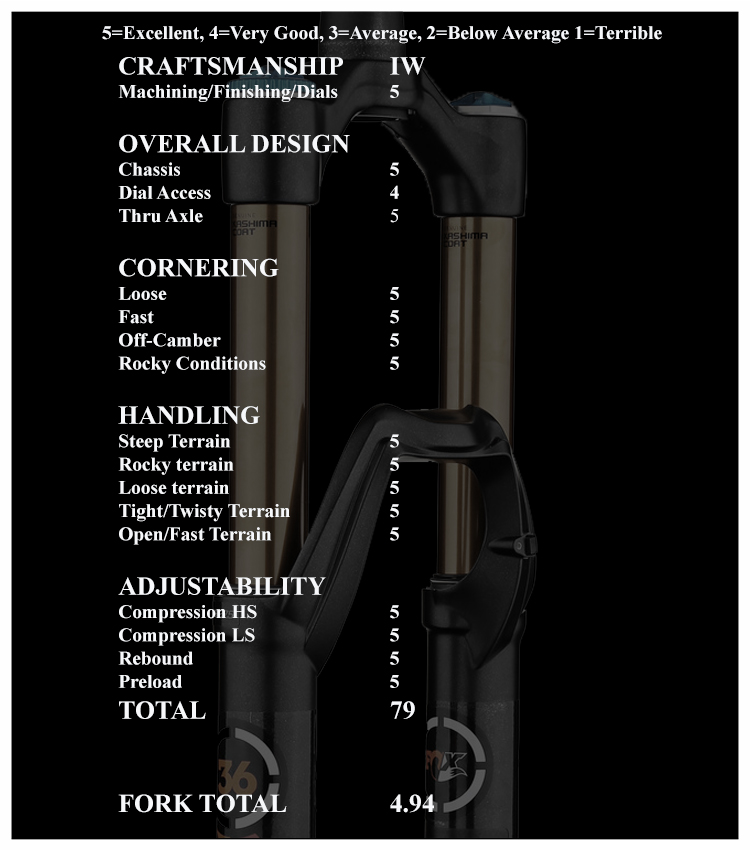
2015 Fox Press Camp
 2015 Fox 36 Talas,
2015 Fox 36 Talas,  2015 Fox 36 TalasFork,
2015 Fox 36 TalasFork,  FIT,
FIT,  Fox 36,
Fox 36,  Talas |
Talas |





